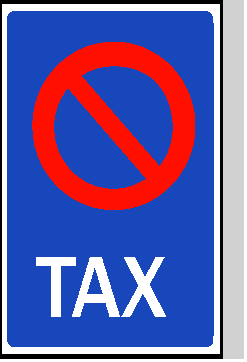Retirees Can Pay No Income Tax on Long-Term Capital Gains

Retirees with low or moderate incomes should consider selling long-term capital assets that have appreciated in value. This is especially true for early retirees, who may have an artificially low income during the time before they start drawing from their retirement accounts.
A long-term capital asset is a stock, bond or other asset held for more than one year. Under current tax law, long-term capital gains taxes have been eliminated for taxpayers in the 10% and 15% ordinary income tax brackets. These brackets include married couples filing jointly with taxable income up to $69,000. After adding the standard deduction of $11,600 and personal exemptions of $3,700 each, a married couple filing jointly will enjoy the 0% capital gains tax rate with an adjusted gross income ("AGI") up to $88,000. (Similarly, the 10% and 15% ordinary income tax brackets include single filers with taxable income up to $34,500. When combined with the standard deduction of $5,800 and personal exemption of $3,700, a single filer will enjoy the 0% capital gains tax rate with an AGI up to $44,000.) Taxpayers pay no taxes on long-term capital gains if their AGIs (including these gains) remain below these limits.
While the 0% capital gains tax rate is available for any taxpayer in the 10% or 15% ordinary income tax bracket, it is especially useful for retirees who may not have qualified before retirement but now qualify because they are no longer working. It is even more useful for early retirees as they are likely to have artificially low incomes during the time between their early retirements and the time they start receiving any pension, social security and/or other retirement benefits, which may push up their incomes past the adjusted gross income limit of the 15% ordinary income tax bracket.
For example, assume Mr. and Mrs. Joy bought 200 shares of ABC stock for $30 per share in 2002. The Joys thought about selling the shares last year when they were still working and the share price was $80 per share, but held off because they would have owed $1,500 in capital gains taxes. This is because their pre-retirement incomes put them in the 25% income tax bracket with its long-term capital gains tax rate of 15%. Now that they’ve retired early, they sell the shares at the current market price of $90 per share. The Joys do not owe any capital gains taxes because their adjusted gross income has decreased enough to drop them into the 15% income tax bracket with its 0% long-term capital gains tax rate. Thus, due to their retirement, their entire $12,000 long-term capital gain is tax-free!
By taking advantage of the 0% long-term capital gains tax rate, taxpayers can also boost the tax basis in their investment portfolio and potentially reduce their future tax obligations. In the example above, assume that Mr. and Mrs. Joy would like to re-invest the $18,000 proceeds from the sale of ABC stock by buying 600 shares of XYZ stock at $30 per share. Their basis in the XYZ stock is now $18,000, as opposed to the $6,000 basis they had in the ABC stock. Should they then sell the XYZ stock at $35 per share, their capital gains will only be $3,000 (i.e., a profit of $35 - $30 = $5 per share multiplied by their 600 shares).
In deciding whether to sell long-term assets to take advantage of this break, be sure to avoid having the capital gains themselves push you from the 15% bracket into the 25% bracket.
The 0% tax rate is due to end December 31, 2012. Given the uncertainty in Washington over policy, it may be wise to take advantage of this tax break before then.








